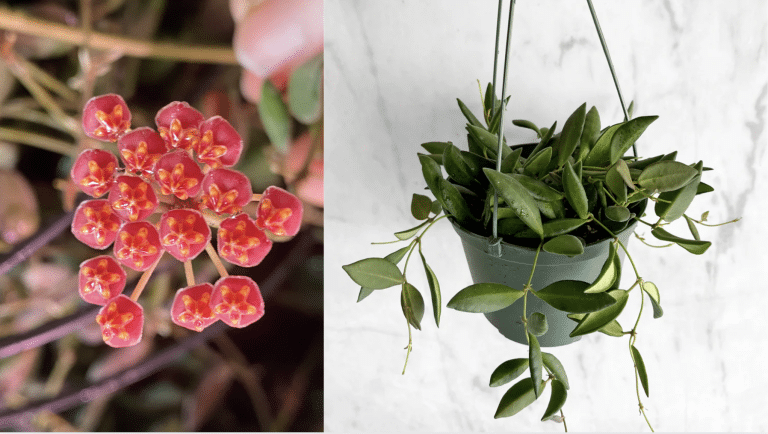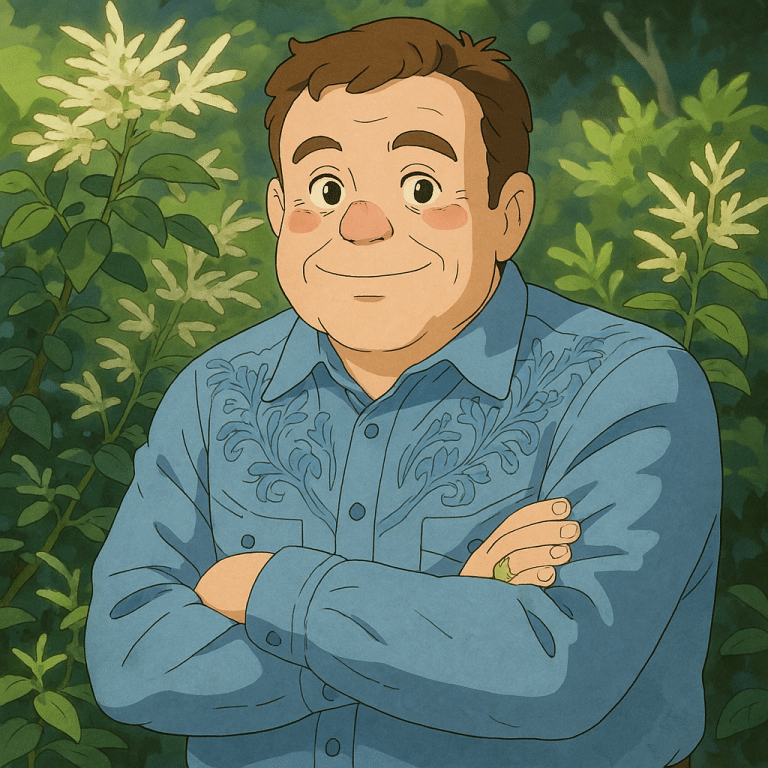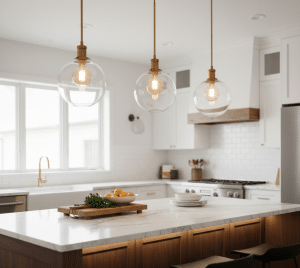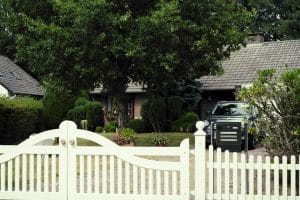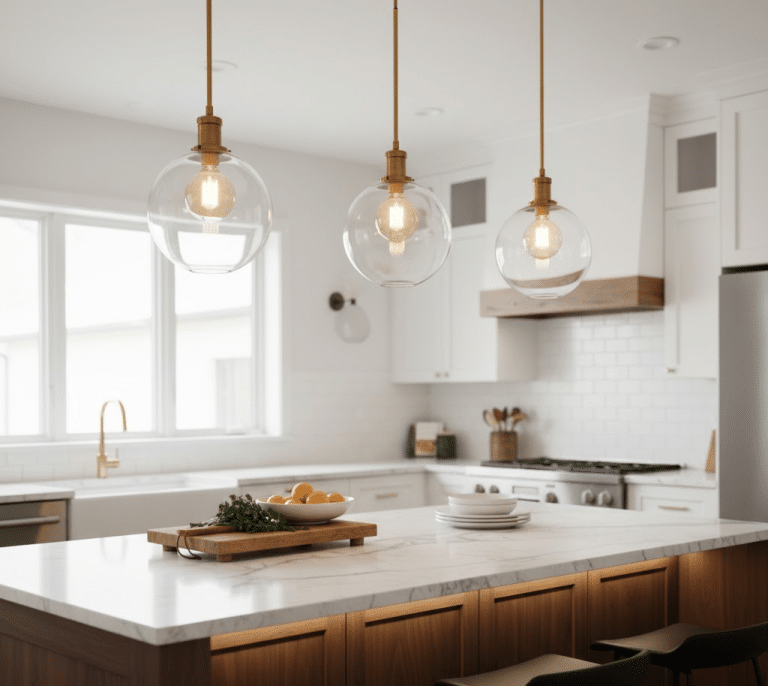Looking for a plant that’s both pretty and easy to grow? Meet Hoya burtoniae, a fast-growing plant with green leaves and reddish edges.
In this blog, we’ll show you how to take care of this lovely plant. You’ll learn about the right light, water, soil, and temperature it needs.
We’ll also share tips on how to make more Hoya burtoniae plants from cuttings and how to help it bloom. Plus, we’ll talk about common problems you might face and their fixes.
We’ll even look at some special types of Hoya burtoniae with spots or patches on their leaves.
Whether you’re new to plants or have many, this guide will help you grow a healthy Hoya burtoniae.
What is Hoya burtoniae?
Hoya burtoniae is a fast-growing plant native to tropical regions of Asia. It has deep green leaves with reddish edges that can become more vibrant with bright light.
This plant grows well in medium to bright light and is easy to care for, making it a great choice for beginners.
Unlike Hoya bilobata, which has smaller, rounder leaves, Hoya burtoniae has elongated, oval-shaped leaves with a unique color pattern, giving it a distinct look.
Caring for Hoya burtoniae

To help your Hoya burtoniae thrive, it’s important to meet its specific care needs. Proper lighting, watering, soil, temperature, and fertilizing will ensure healthy growth.
Here are the key factors to keep in mind when caring for this unique plant.
1. Light Requirements
Hoya burtoniae prefers bright, indirect light. It can tolerate some direct sunlight but too much can cause the leaves to burn or lose their color. Place your plant near a window where it receives filtered light.
If the plant doesn’t get enough light, its growth will slow down, and the vibrant red edges of the leaves may fade. Aim to give the plant the right balance of light to maintain healthy growth and vibrant colors.
2. Watering
Proper watering of Hoya burtoniae is crucial for its health. Water it when the top inch of the soil feels dry to the touch. Avoid letting the plant sit in water, as it can cause root rot.
Signs of overwatering include yellowing leaves, a mushy texture, or a musty smell. If you notice the leaves shriveling, the plant might need more water. Make sure the pot has proper drainage to prevent water from accumulating at the bottom.
3. Soil
Hoya burtoniae needs well-draining soil to grow healthy. A potting mix designed for succulents works well because it allows water to flow freely. You can also mix regular houseplant soil with perlite or sand to improve drainage.
This plant doesn’t like to sit in soggy soil, which can lead to root rot. Make sure your pot has drainage holes to prevent the soil from staying too wet.
4. Temperature and Humidity
Hoya burtoniae grows best in a temperature range of 60°F to 85°F (15°C to 29°C). It’s important to keep the plant in an area with mild warmth. The plant also thrives in high humidity, ideally 50% or higher.
If your home is dry, you can increase humidity by misting the plant occasionally or using a humidifier. Hoya burtoniae doesn’t like cold temperatures or drafts, so avoid placing it in areas with sudden temperature changes.
5. Fertilizing
To encourage healthy growth, fertilize your Hoya burtoniae during the growing season, typically in spring and summer. Use a balanced, water-soluble fertilizer diluted to half strength and applied about once a month.
Avoid fertilizing in fall and winter when the plant is not actively growing. Too much fertilizer can harm the plant, so it’s best to err on the side of caution and feed it sparingly. This helps the plant grow strong without overwhelming it with nutrients.
Propagation Tips for Hoya burtoniae
If you want to grow more Hoya burtoniae or share it with others, propagating from cuttings is a great method.
With a little patience, you can easily grow new plants from a healthy cutting. The process is simple, and by following the right steps, you’ll have a thriving plant in no time.
Here’s a guide to help you get started, along with common mistakes to avoid along the way.
Steps to Propagate Hoya Burtoniae
Propagating Hoya burtoniae is an easy and fun way to expand your plant collection. Whether you’re rooting in water or soil, the process is straightforward and rewarding. Here’s how you can do it:
- Select a Healthy Stem: Choose a healthy stem with at least 2-3 leaves.
- Prepare the Cutting: Remove leaves from the bottom half, leaving a few at the top.
- Rooting in Water: Submerge the node in water, keeping leaves above the waterline.
- Rooting in Soil: Place the cutting in well-draining soil and keep it lightly moist.
- Wait for Roots to Develop: Wait 2-4 weeks for roots to form.
- Transplanting: Once roots are 2 inches long, transplant into a larger pot.
Common Mistakes to Avoid
While propagating Hoya burtoniae is simple, there are a few common mistakes to watch out for:
- Cutting Too Short: Make sure the stem has at least 2-3 nodes.
- Overwatering: Avoid waterlogging, which can cause rot.
- Not Changing Water: Change the water regularly when rooting in water.
- Too Much Sunlight: Provide bright, indirect light, not direct sun.
- Ignoring Temperature: Keep the cutting in a warm spot to encourage rooting.
Flowering and Blooming
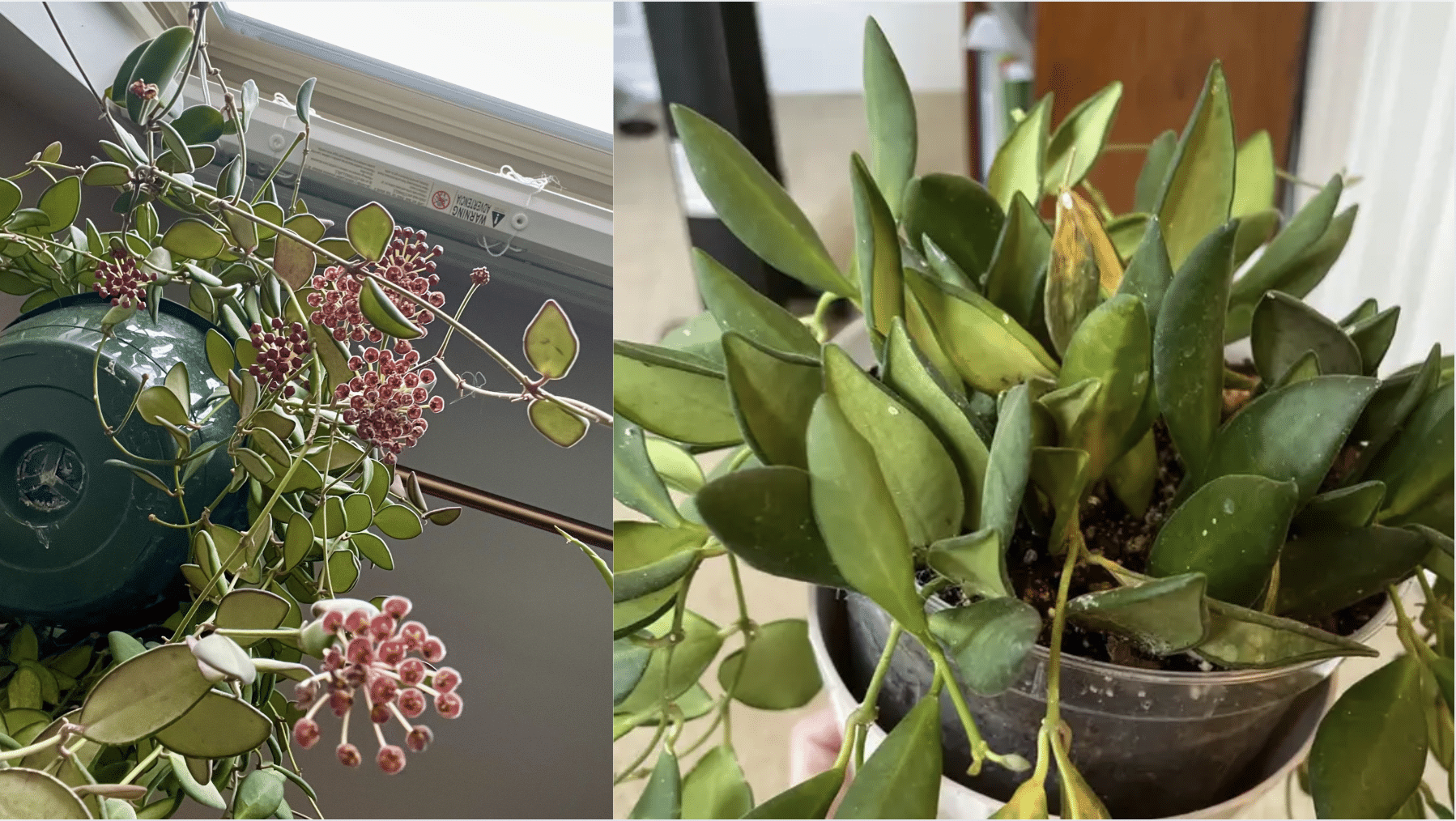
Hoya burtoniae produces tiny, star-shaped flowers that have a sweet, butterscotch-like fragrance. These blooms may seem small, but they add a lovely touch to the plant.
To encourage blooming, provide your plant with bright, indirect light and maintain a warm environment. It thrives in temperatures between 60°F and 85°F.
Keeping it slightly root-bound in a pot can also help trigger more frequent blooming. Regular care will reward you with its beautiful flowers.
The following bullet points highlight key tips for encouraging blooming in your Hoya burtoniae.
- Ensure the plant receives bright, indirect light for optimal blooming.
- Keep Hoya burtoniae slightly root-bound to encourage more flowers.
Common Problems Related to Hoya burtoniae
Resolving common problems quickly is essential to keep your Hoya burtoniae healthy and thriving.
Addressing issues like yellowing leaves, poor growth, or pests ensures that your plant continues to grow strong and vibrant.
By identifying and fixing these problems early, you can help your plant recover and enjoy better health.
- Yellowing Leaves: This can be a sign of overwatering or poor drainage. Make sure the soil is well-draining and adjust your watering schedule.
- Poor Growth: If your Hoya isn’t growing well, it may not be getting enough light. Provide it with bright, indirect light to encourage healthy growth.
- Pests: Common pests like mealybugs and aphids can attack your plant. To treat infestations, use insecticidal soap or neem oil.
- Leaf Dropping: This can happen if the plant is exposed to sudden temperature changes or drafts. Keep the plant in a stable, warm environment.
- Root Rot: Soggy plant roots may lead to root rot. To prevent this issue, ensure proper drainage and avoid overwatering.
Hoya Burtoniae Varieties
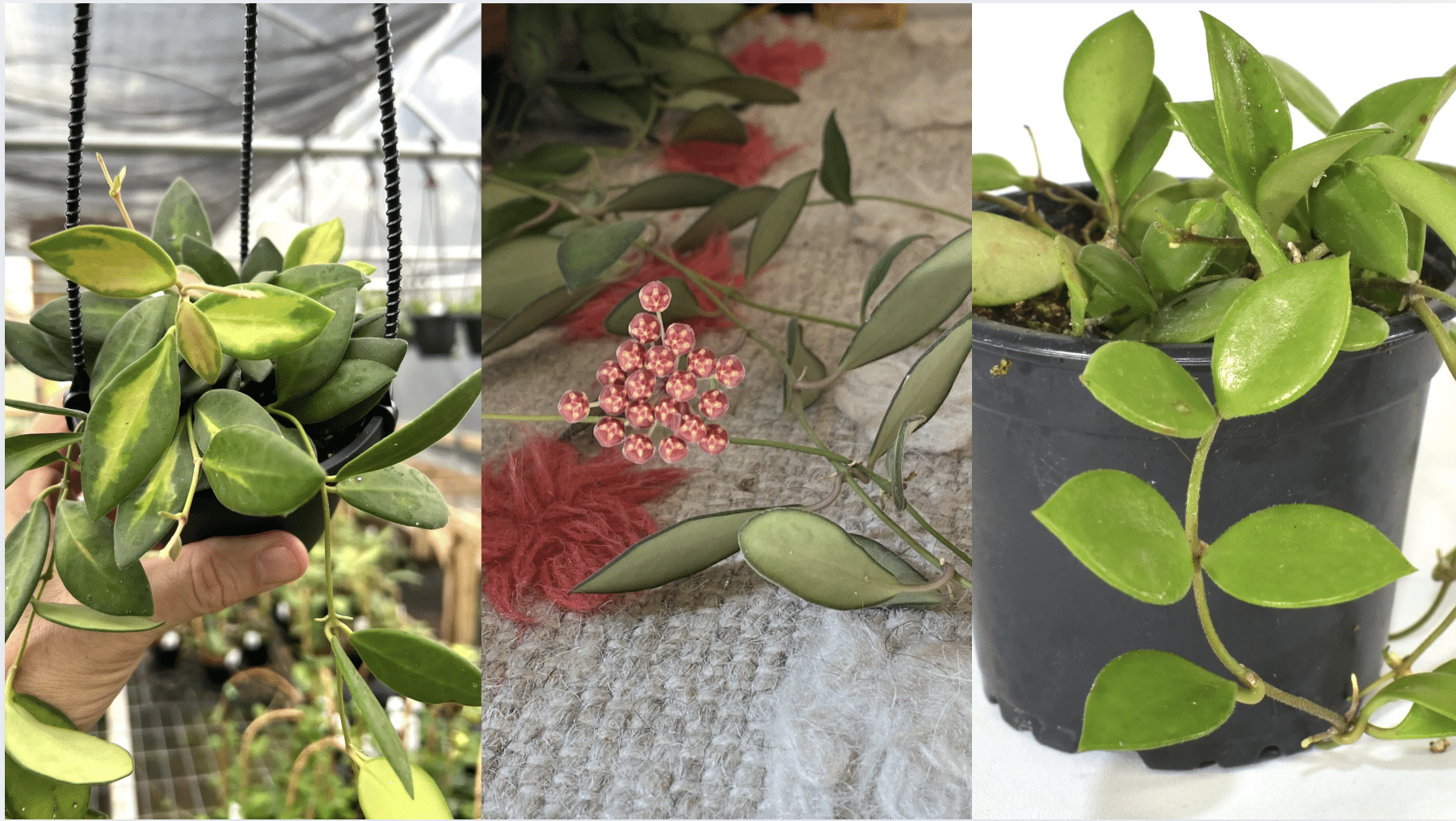
The variegated Hoya Burtoniae shows white or cream spots and patches on its leaves, unlike the normal plant, which has solid green leaves.
These color differences make it rarer and often more expensive. The care needs stay mostly the same, but variegated plants sometimes grow more slowly.
Many plant fans enjoy Hoya Burtoniae hybrids like the Hoya DS-70, which has thicker leaves.
The Hoya sp. Aff. burtoniae is another type that looks similar but has smaller flowers. Hoya Bilobata and Burtoniae crosses are also becoming more common in plant shops and online markets.
Wrapping Up
Now you know all about Hoya burtoniae and how to help it grow well. This plant is great for your home, with its green leaves and sweet-smelling flowers.
Start with the right light, good soil, and careful watering. If you face any problems, like yellow leaves or pests, you now know how to fix them.
Try growing new plants from cuttings to share with friends. You might also want to look for the spotted Hoya burtoniae or one of its hybrid types for your plant shelf.
With these tips, your Hoya burtoniae will grow strong and maybe even bloom for you.
Happy planting!


